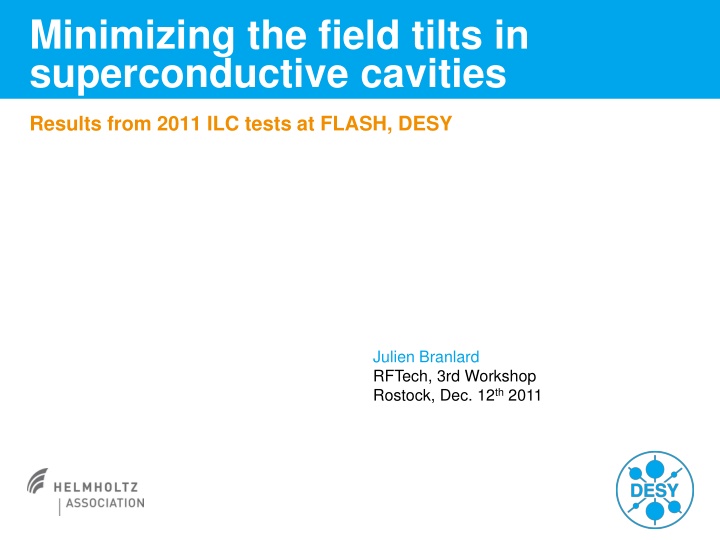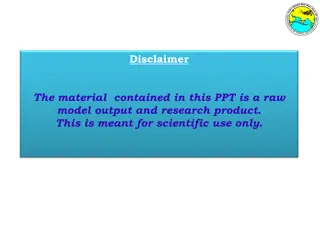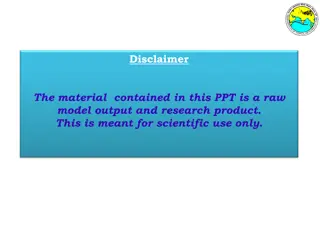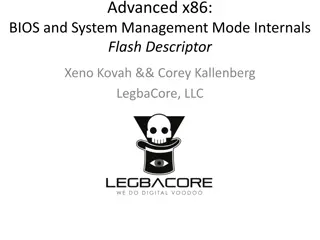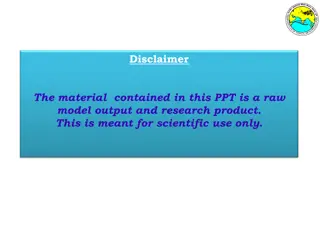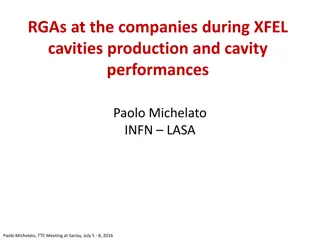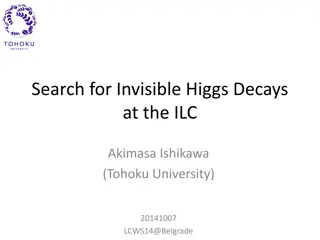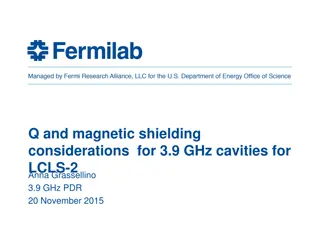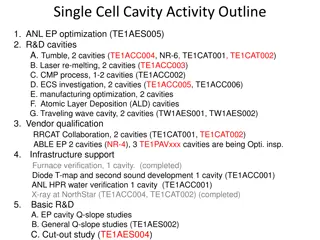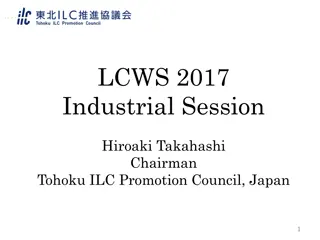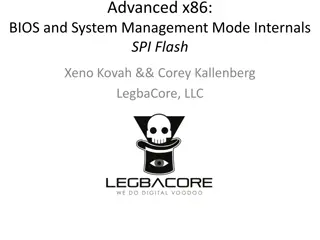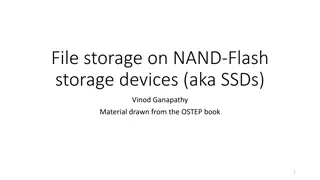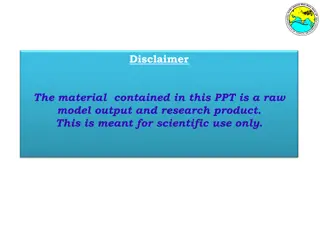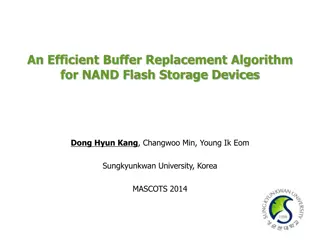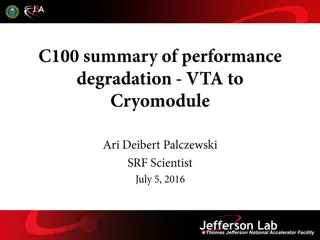Minimizing Field Tilts in Superconductive Cavities: 2011 ILC Tests at FLASH
Understanding the importance of achieving flat gradients in superconductive cavities, the 2011 ILC tests at FLASH led by Julien Branlard focused on minimizing field tilts. Various solutions and test approaches were explored to address the issue, with results indicating the impact of cavity tilt and RF fluctuations on beam loading. The study highlighted the significance of maintaining individual flat gradients and proposed improvements for future implementations at FLASH.
Download Presentation

Please find below an Image/Link to download the presentation.
The content on the website is provided AS IS for your information and personal use only. It may not be sold, licensed, or shared on other websites without obtaining consent from the author.If you encounter any issues during the download, it is possible that the publisher has removed the file from their server.
You are allowed to download the files provided on this website for personal or commercial use, subject to the condition that they are used lawfully. All files are the property of their respective owners.
The content on the website is provided AS IS for your information and personal use only. It may not be sold, licensed, or shared on other websites without obtaining consent from the author.
E N D
Presentation Transcript
Minimizing the field tilts in superconductive cavities Results from 2011 ILC tests at FLASH, DESY Julien Branlard RFTech, 3rd Workshop Rostock, Dec. 12th2011
Overview > Problem statement and historical background Why do we care about individual flat gradients? What solutions were offered to achieve flat gradients with beam loading? What can we actually implement at FLASH? > The Feb. 11 study at FLASH What approach have we followed during the FLASH test studies? Results of the PK |QL studies > Conclusions and prospects Approach limitations Improvements Julien Branlard | Minimizing the Field Tilts in Superconducting Cavities | Dec. 12 2011 | Page 2
I. Introduction: ILC > The International Linear Collider Accel. Params ILC FLASH Unit Cavity tech. SC SC RF freq. 1.3 1.3 GHz Rep. rate 5 5-10 Hz Beam current 9 1-9 mA Average gradient 31.5 26 MV/m RF station 10 MW klystron for 26 cavities 10 MW klystron for 16 cavities Julien Branlard | Minimizing the Field Tilts in Superconducting Cavities | Dec. 12 2011 | Page 3
I. Introduction: FLASH > FLASH > ACC67 Julien Branlard | Minimizing the Field Tilts in Superconducting Cavities | Dec. 12 2011 | Page 4
I. Introduction: problem statement > Why do we care about individual flat gradients? Effect of Cavity Tilt and RF Fluctuations to Transverse Beam Orbit Change in ILC Main Linac K. Kubo, Jan. 2010 > Beam loading BEAM OFF BEAM ON Julien Branlard | Minimizing the Field Tilts in Superconducting Cavities | Dec. 12 2011 | Page 5
I. Introduction: problem statement > Beam loading tilts scale linearly with beam current Simulated tilts for ACC6 at FLASH, with 800 usec flat top 15 10 5 0 ACC6.1 Gradient tilts [ % ] ACC6.2 -5 ACC6.3 -10 ACC6.4 ACC6.5 -15 ACC6.6 -20 ACC6.7 ACC6.8 -25 -30 -35 0 1 2 3 4 5 6 7 8 9 10 Beam current [ mA ] Julien Branlard | Minimizing the Field Tilts in Superconducting Cavities | Dec. 12 2011 | Page 6
I. Introduction: problem statement > Solutions to flat cavity gradient with beam RF Distribution Optimization in the Main Linacs of the ILC , Bane, Adolphsen, Nantista PAC07 Optimal Coupler and Power Settings for Superconductive Linear Accelerators , Branlard, Chase - LINAC08 PkQl-like control for ACC6/7 at FLASH , Michizono, unpublished 2010 RF Distribution Optimization in the Main Linacs of the ILC Bane, Adolphsen, Nantista - WEPMS037.pdf, 2007 Assumes a square forward power pulse Assumes adjustable PK s Julien Branlard | Minimizing the Field Tilts in Superconducting Cavities | Dec. 12 2011 | Page 7
I. Introduction: problem statement FLASH working space > Focus on ACC6 and ACC7 > Motorized couplers (QL adjustments, limited range) > Fixed power distribution (i.e. PK), except for 3dB hybrid > Motorized slow tuners > Dynamic cavity resonance control with piezo Julien Branlard | Minimizing the Field Tilts in Superconducting Cavities | Dec. 12 2011 | Page 8
II. Analytical approach > Analytical solution for optimal QL assumes perfect tuning solve for QLi when possible cavity i loaded Q cavity i forward power during fill time [W] DC beam current [A] fill time ( beam arrival time) [s] fill time to flat top voltage ratio (including beam compensation) Julien Branlard | Minimizing the Field Tilts in Superconducting Cavities | Dec. 12 2011 | Page 9
II. SIMCAV: Cavity simulator Julien Branlard | Minimizing the Field Tilts in Superconducting Cavities | Dec. 12 2011 | Page 10
II. SIMCAV: Cavity simulator Julien Branlard | Minimizing the Field Tilts in Superconducting Cavities | Dec. 12 2011 | Page 11
II. Calibration procedure DAQ data: Feb. 07 2011, 22:37 1. Load Vcav from DAQ FLASH DAQ data 2. Compute actual QL , PK and f from DAQ data 3. Type in QL, PKand f into simulator 4. Check agreement between simulated and FLASH data 5. Adjust QL in simulator to flatten tilts 6. Implement QL corrections in FLASH 7. Check gradient flatness Ib = 4.5 mA Julien Branlard | Minimizing the Field Tilts in Superconducting Cavities | Dec. 12 2011 | Page 12
II. Calibration procedure 1. Load Vcav from DAQ 2. Compute actual QL , PK and f from DAQ data simulated data vector sum 3. Type in QL, PKand f into simulator 4. Check agreement between simulated and FLASH data 5. Adjust QL in simulator to flatten tilts 6. Implement QL corrections in FLASH 7. Check gradient flatness Julien Branlard | Minimizing the Field Tilts in Superconducting Cavities | Dec. 12 2011 | Page 13
II. Calibration procedure 1. Load Vcav from DAQ FLASH DAQ data 2. Compute actual QL , PK and f from DAQ data simulated data vector sum 3. Type in QL, PKand f into simulator 4. Check agreement between simulated and FLASH data 5. Adjust QL in simulator to flatten tilts 6. Implement QL corrections in FLASH 7. Check gradient flatness Julien Branlard | Minimizing the Field Tilts in Superconducting Cavities | Dec. 12 2011 | Page 14
II. Calibration procedure 1. Load Vcav from DAQ 2. Compute actual QL , PK and f from DAQ data simulated data vector sum 3. Type in QL, PKand f into simulator 4. Check agreement between simulated and FLASH data 5. Adjust QL in simulator to flatten tilts 6. Implement QL corrections in FLASH 7. Check gradient flatness Julien Branlard | Minimizing the Field Tilts in Superconducting Cavities | Dec. 12 2011 | Page 15
II. Calibration procedure 1. Load Vcav from DAQ 2. Compute actual QL , PK and f from DAQ data simulated data vector sum 3. Type in QL, PKand f into simulator 4. Check agreement between simulated and FLASH data 5. Adjust QL in simulator to flatten tilts 6. Implement QL corrections in FLASH 7. Check gradient flatness Julien Branlard | Minimizing the Field Tilts in Superconducting Cavities | Dec. 12 2011 | Page 16
II. Calibration procedure 1. Load Vcav from DAQ 2. Compute actual QL , PK and f from DAQ data simulated data vector sum 3. Type in QL, PKand f into simulator 4. Check agreement between simulated and FLASH data 5. Adjust QL in simulator to flatten tilts 6. Implement QL corrections in FLASH 7. Check gradient flatness Julien Branlard | Minimizing the Field Tilts in Superconducting Cavities | Dec. 12 2011 | Page 17
II. Calibration procedure 1. Load Vcav from DAQ FLASH DAQ data 2. Compute actual QL , PK and f from DAQ data simulated data vector sum 3. Type in QL, PKand f into simulator 4. Check agreement between simulated and FLASH data 5. Adjust QL in simulator to flatten tilts 6. Implement QL corrections in FLASH 7. Check gradient flatness Julien Branlard | Minimizing the Field Tilts in Superconducting Cavities | Dec. 12 2011 | Page 18
II. Calibration procedure 1. Load Vcav from DAQ FLASH DAQ data 2. Compute actual QL , PK and f from DAQ data simulated data vector sum 3. Type in QL, PKand f into simulator 4. Check agreement between simulated and FLASH data 5. Adjust QL in simulator to flatten tilts 6. Implement QL corrections in FLASH 7. Check gradient flatness Julien Branlard | Minimizing the Field Tilts in Superconducting Cavities | Dec. 12 2011 | Page 19
II. Assessing the accuracy of the method > QL scan 3 Keep beam current constant but walk QL s around optimized value 2 1 gradient tilts [%] 0 > IB scan -1 Keep optimized QL s but ramp beam up/down -2 -3 -0.6 -0.4 - 0.2 0 0.2 0.4 0.6 0.8 QL [ x 106 ] Julien Branlard | Minimizing the Field Tilts in Superconducting Cavities | Dec. 12 2011 | Page 20
II. Assessing the accuracy of the method > QL scan Keep beam current constant but walk QL s around optimized value > IB scan Keep optimized QL but ramp beam up/down Julien Branlard | Minimizing the Field Tilts in Superconducting Cavities | Dec. 12 2011 | Page 21
II. Assessing the accuracy of the method > QL settings are limited ILC specs : 9 mA ! Julien Branlard | Minimizing the Field Tilts in Superconducting Cavities | Dec. 12 2011 | Page 22
II. Impact of cavity frequency tuning Before freq. tuner adjustments After freq. tuner adjustments AMPLITUDE AMPLITUDE ~ 0.1 MV/m QL = 1.58x106 QL = 1.58x106 PHASE PHASE f = 70 Hz Julien Branlard | Minimizing the Field Tilts in Superconducting Cavities | Dec. 12 2011 | Page 23
III. Study insights What went well > Motorized couplers / tuners > Analytical approach proved to be useful > Predicted optimized QL values were accurate to 0.2e6 > Successfully implemented the tuning plan tilts < 0.1MV/m What we ve learnt > Cavity resonance control is crucial for gradient tilts > Limitations to the analytical approach: How accurately can we compensate for LFD OR include in model? How accurately can we measure and set QL s +/- 2 to 5% What is still unanswered > No proposed solution for high beam currents (>6mA) implementable at FLASH > There is not always a solution to flatten all cavities (especially when gradient spread is large) > No solution to bring up the machine at its highest gradient Julien Branlard | Minimizing the Field Tilts in Superconducting Cavities | Dec. 12 2011 | Page 24
III. Conclusions and prospects > Machine automation Automatic QL settings Automatic quench detection > Machine operation scenarios Tuning strategies How to ramp up the beam How to recover from a quench > Next study time February 2012 Thank You! Julien Branlard | Minimizing the Field Tilts in Superconducting Cavities | Dec. 12 2011 | Page 25
